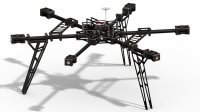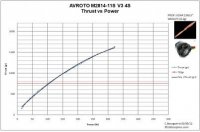Well come to find out correctly running FEA analysis on carbon fiber materials isn't as easy as other materials. The problem is assigning correct material properties to your modeled parts. Most materials are "isotropic" meaning their mechanical properties are the uniform regardless of orientation. But, carbon fiber is "anisotropic" so its mechanical properties change depending on orientation of the applied load with respect to how the fibers are laid out. There are too many factors with carbon fiber for me to replicate its material properties accurately within the program. So what I did instead is get as close as I can...
What I did was take a material that has similar (but LESSER) properties and use it instead. I was able to locate the common stiffness (elastic modulus) value for carbon fiber so I input that into my material properties which gets me pretty close. Below are the mechanical values I used to define my material. I modeled up a 16mm OD / 13mm ID tube, at 15 inches long. With the Dialfonzo hex center plates and motor mounts this results in a 850 mm Hex from opposing motor to motor. I also models up boom clamps at the correct locations per his center plate. Force applied equals max thrust possible from an Avroto 2814-11 motor running on 4s lipo spinning a 13X6.5 XOAR wood prop.
Boom: Carbon Fiber 16mm OD X 13mm ID (1.5mm wall). 15" Long
Contraints: Fixed on the end by two tube clamps positioned as per the center plates of Dialfonzo hex
Force: Force applied equals 1650 grams. (See 1001copters.com thrust test results for this motor, prop, battery combo)
View attachment 8041
Material properties: Values used are taken from titanium alloy Ti=8Mn, Annealed but with elastic modulus and poisson's ratio changed to match common values for carbon fiber.
View attachment 8039
Here is a picture of the analysis.
View attachment 8040
Resulting displacement = .722mm or .028". So a bit less than 1/32" of an inch the boom will bend upwards under full thrust from the motor. Keep in mind this is probably more movement than it will see in real life since I feel the real deal will have better mechanical properties than what I input into the program. Also when your craft if aloft the motor isnt pulling against a static (unmoving) end, like we have in this simulation. The motor only provides enough thurst to equal the weight of the craft (or if you are accending its pulling with slightly more force).
With this result I feel it would be safe to move the chopper size all the way out to 950mm, using 16mm booms if needed W/O issue. When I have time I'll do another test with 21.5mm boom and see how much stiffness increases and deflection goes down. I imagine it would be a good amount...





